3 Tips for Athletes’ Winter Training
1 Comment“A lifetime of training for just 10 seconds”
Jesse Owens
Winter for track and field athletes is the ideal time to work on conditioning without the focus of peaking for competition. Here Assistant Coach (and erstwhile sprinter) Matt Durber highlights 3 ways you can improve your athlete winter training.
Improve your off season training

Winter is a chance to get off the track!
There is more to out of season training than running endless laps of the track or competing in cross country races.
The following observations are based on my experience over the last few years of athletics training, as well as some insights from top track coaches.
1) Warming up: the clue’s in the name
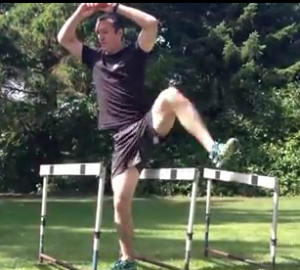
Matt using hurdles to develop mobility
Recently on a cold winter evening, I saw an athlete arrive at the track and proceed to jog a couple of laps.
Upon finishing and becoming “too warm”, the athlete removed their tracksuit and performed some static stretches sat down on the floor.
Needless to say after a few minutes the athlete was now “too cold” and had to go and warm up again (making the previous 10 minutes completely pointless?!)
Instead, why not prepare for training the smart way. A run to warm up initially is not a bad thing (after all, that is what you will be doing during the session!), but should be followed by a series of dynamic exercises working on mobility and technique, rather than static stretches.
More tips on warming up.
2) The need for Speed
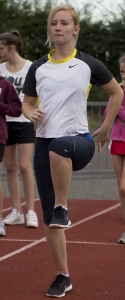 Winter is traditionally used as a time to work on endurance, even for sprinters. However, without working on top speed, what are you learning to endure?
Winter is traditionally used as a time to work on endurance, even for sprinters. However, without working on top speed, what are you learning to endure?
Speed work should be included in the training plan all year round, and should consist of exercises to help improve top speed through correct running mechanics. The volume of this work can then be increased (when suitable) to provide the endurance of the newly gained speed.
Speed training is not only important for Sprinters, but can also help middle and long distance runners as well. Increasing your top speed will result in improved efficiency when running at a slower pace.
Read more thoughts on speed training from Frans Bosch: author of “Running- Biomechanics and Exercise Physiology Applied in Practice”
3) Strength training
Many athletes use the winter months as a time to train in the gym to increase strength and power.
Although exercises such as Squats and Deadlifts will provide a significant stimulus for muscular adaptation, it is just as important to focus on the application of strength.
Circuits are a great way of organising a group and getting general work done in a short time and I use them accordingly (circuit video and here). However, doing one good repetition, followed by 14 bad ones is helpful to neither body or soul!
Rather than just performing generic exercises to strengthen legs or “core”, it is also important to focus on the requirements of your event.
- Runners-e.g. Hip heist, knee stability and ankle stiffness
- Jumpers-e.g. Horizontal or vertical displacement off single leg
- Throwers– e.g. Shoulder strength and mobility as well as rotational strength from torso and hips.
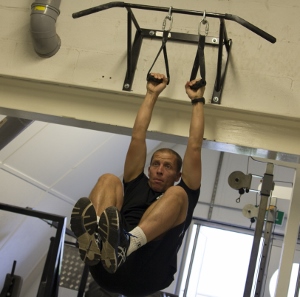 This hanging hip drill is an example of specific strength.
This hanging hip drill is an example of specific strength.
A good rule of thumb is to work on general strength for 50% of the time, specific strength the other 50%.
This review of Track coach Gary Winkler’s seminar on speed training describes the importance of making every aspect of training relevant to your sport or event.
Read here for more information on the role of the hamstrings during running.
Summary
- Make every aspect of your training, from warm ups to gym work, relevant to you and your event.
- Aim for precision and quality in every repetition in the gym or lap of the track that you complete.
- Based on my personal experience over the last year as well as the wealth of experience of other coaches I have learned from, the athletes who make the most progress are the ones that do things consistently well.
Matt Durber
If you want comprehensive training plans with video clips, then check out our ebooks on Amazon: Jump Higher, Run Faster and Get Stronger.
Any young sports people in Devon who want to improve their performance, either come to our weekly sessions in Willand or one of our holiday Sports Performance Workshops


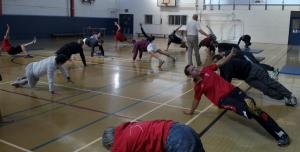 When looking at mechanical efficiency, the load must be determined by the quality of the technique.
When looking at mechanical efficiency, the load must be determined by the quality of the technique.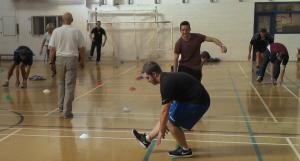 Kelvin gave examples of this, and we started with a lot of squat variations, followed by physical competency assessments.
Kelvin gave examples of this, and we started with a lot of squat variations, followed by physical competency assessments.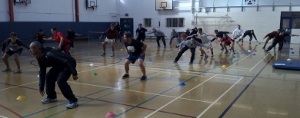 The last hour of the day was all practical with Kelvin taking the group through some lunge progressions, sway drill variations and single-leg squat variants.
The last hour of the day was all practical with Kelvin taking the group through some lunge progressions, sway drill variations and single-leg squat variants.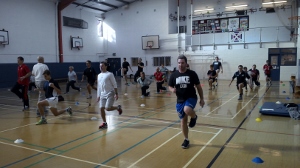 With minimal coaching cues, Kelvin set tasks that their bodies had to solve: linear, lateral, rotational, squatting, bracing, and hinging. So much variation and fun, with just the body.
With minimal coaching cues, Kelvin set tasks that their bodies had to solve: linear, lateral, rotational, squatting, bracing, and hinging. So much variation and fun, with just the body. Kelvin Giles gave a great 2 hour presentation to the staff at
Kelvin Giles gave a great 2 hour presentation to the staff at 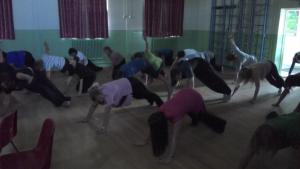 I have seen Kelvin
I have seen Kelvin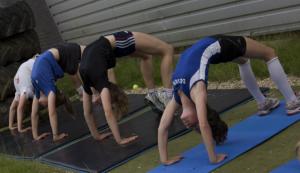 Here are some thoughts on the training of athletic movement gained from recent reflections/ reading or coaching. In no particular order:
Here are some thoughts on the training of athletic movement gained from recent reflections/ reading or coaching. In no particular order: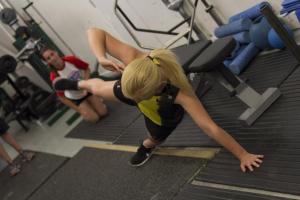 “The core is a human construct, not a physiological construct” Lederman. If your coach is getting you to do “core” training consisting of the plank: sack them and get a new one!
“The core is a human construct, not a physiological construct” Lederman. If your coach is getting you to do “core” training consisting of the plank: sack them and get a new one! That is what a lot of parents of young athletes feel like. Buffetted along the river of teenage years, carried by a current of car journeys,camps. training sessions, angry coaches, exams and hormones.
That is what a lot of parents of young athletes feel like. Buffetted along the river of teenage years, carried by a current of car journeys,camps. training sessions, angry coaches, exams and hormones.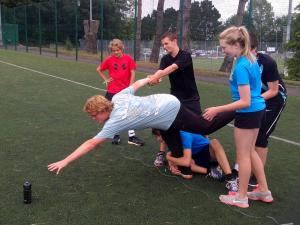 The last two sections of the day were getting the athletes running fast and exploring different ways of moving. Using principles I have learnt from
The last two sections of the day were getting the athletes running fast and exploring different ways of moving. Using principles I have learnt from 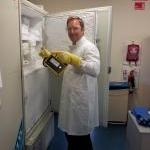 In the rush to use Sports Science, the most important element is the Human element. Hence the quote above.
In the rush to use Sports Science, the most important element is the Human element. Hence the quote above. Another problem is the lack of sleep that teenagers are getting. Constantly wired into their screen devices, or staying up late to catch up on studies, means they don’t get enough
Another problem is the lack of sleep that teenagers are getting. Constantly wired into their screen devices, or staying up late to catch up on studies, means they don’t get enough  Kids must be able to play. This leads to better all around development: Cognitively; physically and socially. (That doesn’t mean adult organised play based on mini versions of team sports).
Kids must be able to play. This leads to better all around development: Cognitively; physically and socially. (That doesn’t mean adult organised play based on mini versions of team sports).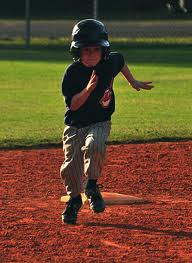 None of these qualities operate in isolation. Instead, they sequence and operate together. The gait cycle is fundamental in this.
None of these qualities operate in isolation. Instead, they sequence and operate together. The gait cycle is fundamental in this. For those of you (if there are any) who have read this series of blogs, you may think have gone into too much detail. I haven’t: I have just scratched the surface.
For those of you (if there are any) who have read this series of blogs, you may think have gone into too much detail. I haven’t: I have just scratched the surface. These were the 3 cornerstones of Physical education and a gym culture where “you went to learn, not to train” according to Ed Thomas at GAIN V this year.
These were the 3 cornerstones of Physical education and a gym culture where “you went to learn, not to train” according to Ed Thomas at GAIN V this year.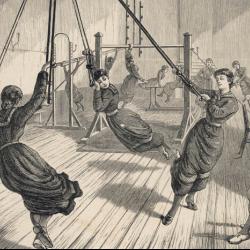 Then, someone invented basketball and the schools had to remove all the kit and allow that to take place.
Then, someone invented basketball and the schools had to remove all the kit and allow that to take place. In this Olympic Year, I thought it would be a good idea to hear from coaches who have worked with developing athletes and their thoughts. Today
In this Olympic Year, I thought it would be a good idea to hear from coaches who have worked with developing athletes and their thoughts. Today 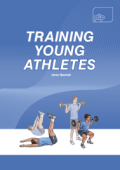
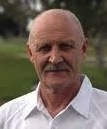 Kelvin Giles has a vast experience working with International athletes. His
Kelvin Giles has a vast experience working with International athletes. His 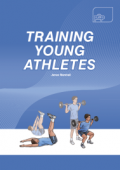 If you wish to have an easy to follow guide to training young athletes, then click on the book cover to the right. I wrote this standing on the shoulders of giants.
If you wish to have an easy to follow guide to training young athletes, then click on the book cover to the right. I wrote this standing on the shoulders of giants. Vern Gambetta is an Athletic Development coach based in the USA, his book “Athletic Development” is a must read for aspiring coaches in this field. He also runs the
Vern Gambetta is an Athletic Development coach based in the USA, his book “Athletic Development” is a must read for aspiring coaches in this field. He also runs the